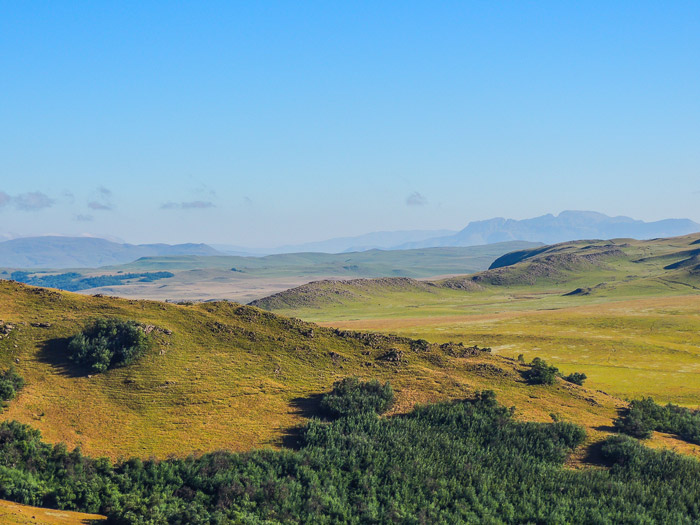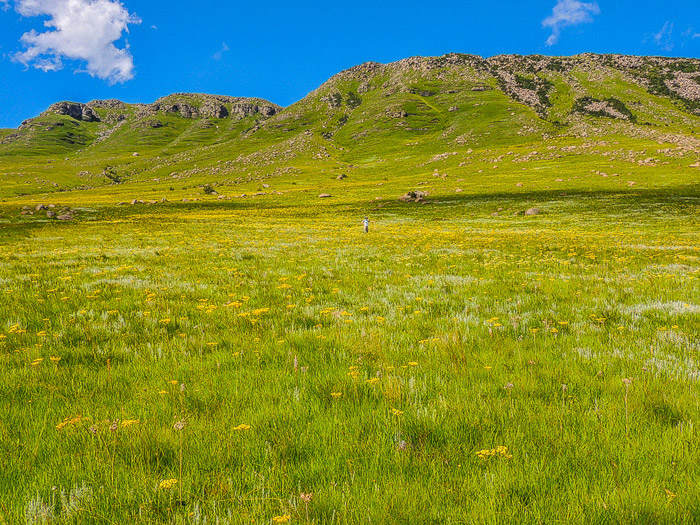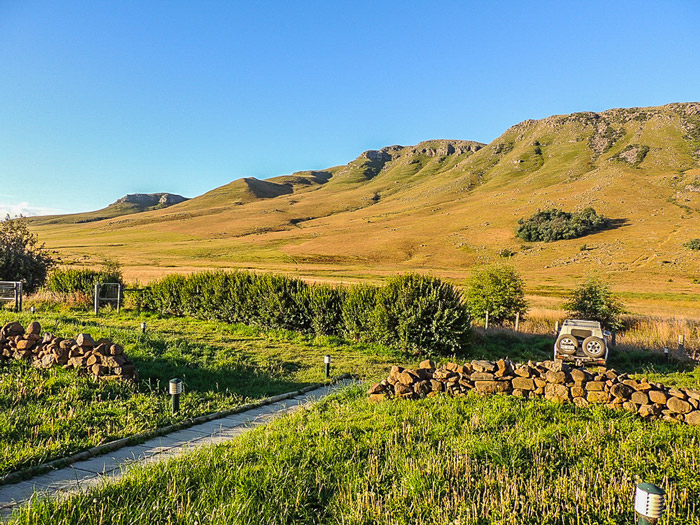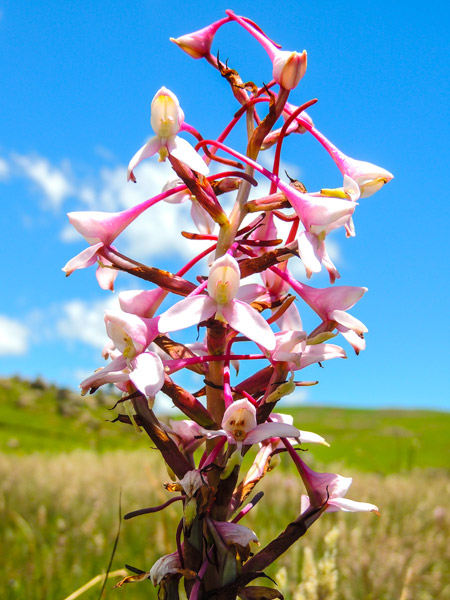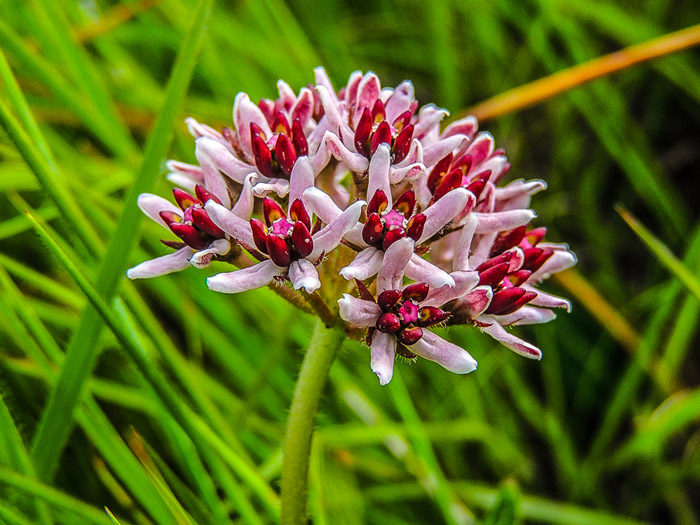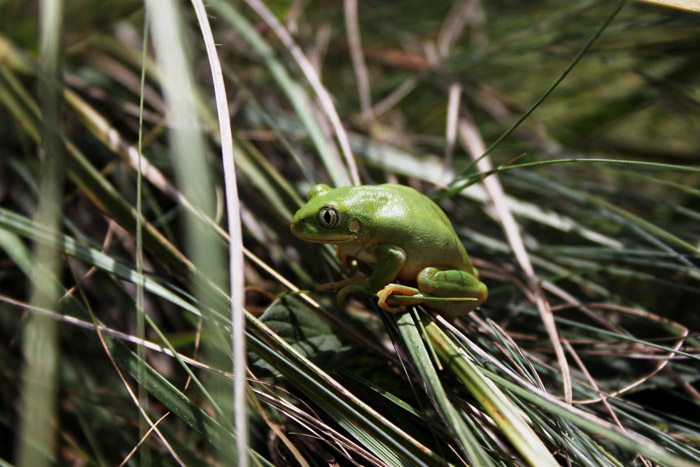Ntsikeni Nature Reserve – a little-known gem
Posted by: MySchool MyVillage MyPlanet. Article from Africa Geographic Blog.
Nestled amongst the mountains in the foothills of the Drakensberg lies Ntsikeni Nature Reserve – an area of unique natural beauty and tranquility, providing natural habitats that support many globally threatened and endemic species.
©Graham Grieve
Located in southern KwaZulu-Natal, between Underberg and Kokstad, the approximately 10,000ha reserve plays an important role in conserving the Drakensberg grassland biome. The Ntsikeni Vlei Wetland, which is one of the largest high altitude wetlands in South Africa, has been declared a Ramsar site and is of ecological importance for water storage and water flow regulation in the Ngwagwane and Umzimkhulu River systems.
©Graham Grieve
The reserve is named after the mountain on its eastern boundary, called iNtsikeni by the local community. The name is derived from the Zulu word intsika, which is the pillar that supports the roofs of traditional huts. This is because the mountain is shaped like a hut and is the highest point in the landscape. From the 1880s the area was initially farmed by private landowners but was subsequently bought by the government in 1950 and declared a nature reserve in 1978. As a result of an absence of active management of the reserve, several thousand livestock grazed the reserve and more than 200 people lived there illegally prior to 1996 when the Eastern Cape environmental authority intervened. After negotiations with the local chief, the inhabitants were compensated and relocated to alternative land by 2000. In 2006 the Mzimkhulu district was transferred from the Eastern Cape to KwaZulu-Natal, and Ezemvelo KZN Wildlife took over management of the reserve.
©KZN Ezemvelo Wildlife
In 2003, two tourist lodges – May Lodge, designed for school groups and conferences, and Ntsikeni Lodge, providing more exclusive accommodation – were constructed, with the lodges becoming the property of the local community. At the present time May Lodge is no longer operating, but the beautifully situated and comfortable Ntsikeni Lodge is in the capable hands of Dalu Ngcobo, who is also a trained bird guide.
©KZN Ezemvelo Wildlife
©Graham Grieve
Although best known as a birding destination, Ntsikeni is also a botanical treasure for plant lovers – particularly for orchid enthusiasts as 65 orchid species have been recorded in the reserve. At the peak of summer the mountain slopes and wetlands are covered in swathes of orchids of varying sizes, shapes and colours. Habitats vary from wetlands to grassland, rocky outcrops, mountain streams, rivers and mountain plateau, providing rich and diverse plant life. There are more than 1,300 plant species, of which approximately 35 are of conservation concern, mostly because of declining numbers or loss of habitat.
©Graham Grieve
©Graham Grieve
The Ntsikeni Vlei provides an important breeding site for wattled cranes, with up to six pairs breeding in the wetland annually, and the critically endangered Eurasian bittern is regularly heard and occasionally sighted there. Other species include the critically endangered white-winged flufftail and the vulnerable short-tailed pipit, as well as yellow-breasted pipit, African marsh harrier, Denham’s bustard, striped flufftail and African grass owl. On the mountain slopes of the nature reserve there is a roosting colony of Cape vultures, and a pair of endangered bearded vultures regularly nests in the nature reserve.
The vlei also provides a habitat for the threatened and endemic long-toed tree frog (Leptopelis xenodactylis). This frog lives above ground in summer but below ground in winter when the reserve regularly experiences temperatures well below freezing, frequent severe frosts and snowfall in most years. Some mammal species also favour the wetland habitat, such as the southern reedbuck and Cape clawless otter. Oribi, mountain reedbuck, grey rhebok and grey duiker also occur within the nature reserve and in 2008 black wildebeest and blesbok were relocated from Coleford Nature Reserve to Ntsikeni in an effort to bolster the numbers and the variety of game species.
©Steve McKean/KZN Ezemvelo Wildlife
In addition to the biodiversity of the reserve and the important water storage and streamflow regulation functions of the Ntsikeni Vlei, the reserve has the potential to support community based tourism initiatives that can contribute to the socio-economic development of the surrounding communities.
©Graham Grieve
The Botanical Society of South Africa love hearing of such bio-diverse gems out there and it encourages the sharing of nature experiences, as well as the awareness, appreciation and wise use of our rich natural resources and treasures. Kate has shed light on another rare location that sounds breathtaking.
Our best stories, every week
Sign up to get our online magazine plus most popular blog posts sent to your mailbox every week.
Follow us on social media
Book your accommodation right here on ShowMe.
You can find the top hotels, lodges and Airbnb establishments conveniently placed on the map below. All you need to do is click on the place that’s conveniently located and within your budget and then make a booking. What could be easier?
If the map is not where you want to be, click on the ShowMe Pin and then enter the exact name of the location and the map will adjust accordingly.



